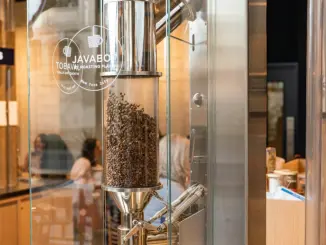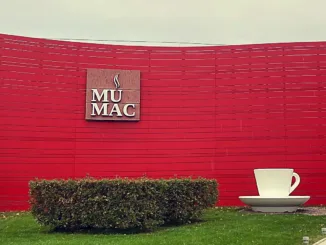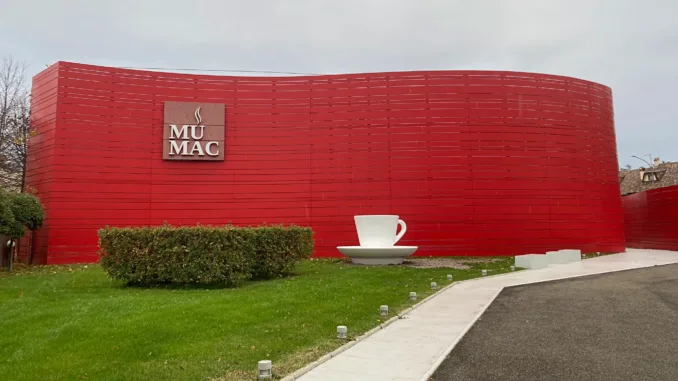
On the outskirts of Milan, coffee lovers can find MUMAC, an espresso machine museum. We visited its seven rooms to learn more about the fascinating history of espresso machines.
BY TANYA NANETTI
SENIOR ONLINE CORRESPONDENT
Photos by Tanya Nanetti
After our recent visit to the La Marzocco Academy, we had the chance to double our luck by visiting MUMAC, the espresso machine museum, on a rainy November morning.
Welcome to MUMAC
Housed in an industrial area on the outskirts of Milan, near the La Cimbali factory, MUMAC houses a huge collection of espresso machines of various brands. MUMAC welcomes visitors every Tuesday and Thursday by appointment for a free tour guided by a helpful app.
Once we were inside the red building, it was time to start the tour with the first of seven rooms. This room traces the early years of espresso machine production.
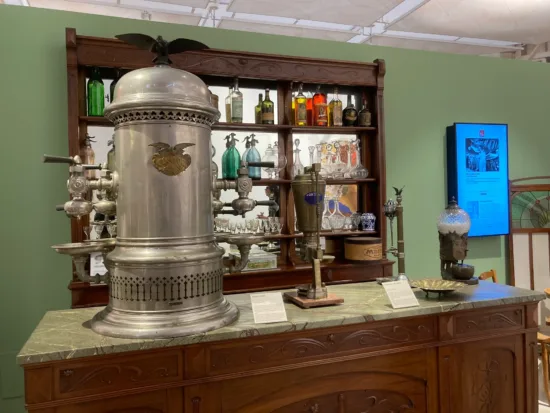
Room One: Espresso’s Early Years
In this room, all the machines were huge, vertical, and beautiful, decorated according to the ideals of Art Nouveau. These machines are totally different from what we know today; prominent among them is the La Pavoni Ideale, which features the first brewing group in history and was presented by its inventor, Luigi Bezzera, at the 1906 Milan Expo.
In addition to the collection of machines, the room features a reproduction of a historical café, which at the time would have been reserved for wealthy people. There was also a brief but comprehensive presentation of how coffee was usually prepared in Italy before the espresso “revolution.“ At one time, coffee was prepared with a machine that took almost an hour for a brew. Thanks to Angelo Moriondo’s invention of the steam machine, the brewing time was reduced to about 10 minutes for a big batch of coffee: not quite espresso, but definitely something faster.
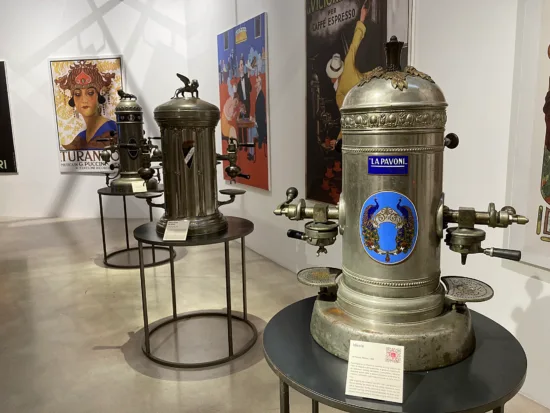
Room Two: The Interwar Period
We then moved on to the next room, which covers the interwar period. Here the machines reflected both the troubled historical period and the functional simplicity of the age of rationalism. The geometric lines and unadorned bodies on these machines seemed to imply the importance of function over appearance. Also from this period was the invention of horizontal espresso machines. These were better suited to aid the barista in multitasking, producing coffee faster to satisfy the increasing number of customers beginning to frequent cafés.
This second room houses such important machines as the La Cimbali Rapida, the first machine produced by Giuseppe Cimbali (the foreman of La Cimbali Group), and La Cornuta, the first machine designed by a designer—Gio Ponti—in 1947.
The Cornuta, considered the most beautiful coffee machine of all time, had very limited production. Its steam technology was already almost obsolete at the time, when a new lever was introduced to the market. This is probably why only two La Cornuta still exist—one in MUMAC and one hidden in a private collection.
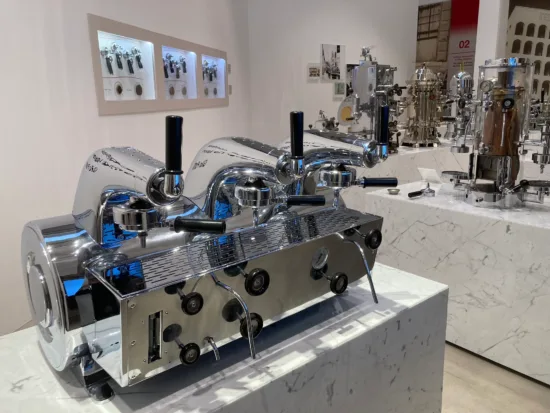
Room Three: Postwar Tech Improvements
The third room focuses on the postwar period and Achille Gaggia’s invention of the lever in 1948, first featured in an espresso machine produced by Faema. For the first time there was crema on top of espresso, and many machines bear inscriptions advertising it to make skeptical customers understand this new way of drinking coffee.
Machines of this era were richly decorated, as if to represent the innovative economy of the time: The design was often shiny and gorgeous, recalling the design of jukeboxes and Cadillacs, inspired by the long-awaited American dream.
There was also a reproduction of another café here, showing how the café evolved as a social space during those decades. They were now a place to chat with friends, watch the news on TV, study, or talk politics. No longer a place only for wealthy people, these new (Italian) cafés became a meeting point for everyone.
Join us tomorrow for part two of our visit to MUMAC.
ABOUT THE AUTHOR
Tanya Nanetti (she/her) is a specialty-coffee barista, a traveler, and a dreamer. When she’s not behind the coffee machine (or visiting some hidden corner of the world), she’s busy writing for Coffee Insurrection, a website about specialty coffee that she’s creating along with her boyfriend.
Subscribe and More!
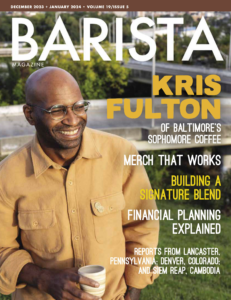
Out now: It’s the December 2023 + January 2024 issue! Read it for free with our digital edition. And for more than three years’ worth of issues, visit our digital edition archives here.
You can order a hard copy of the magazine through our online store here, or start a subscription for one year or two.


